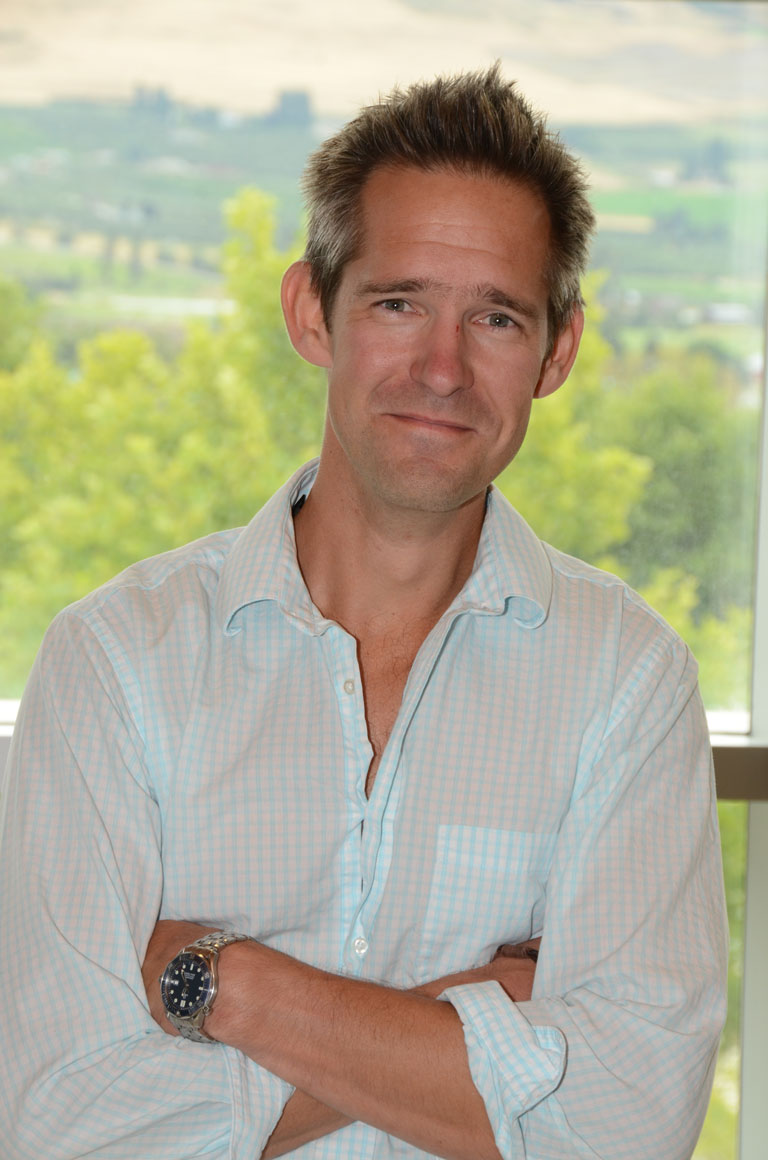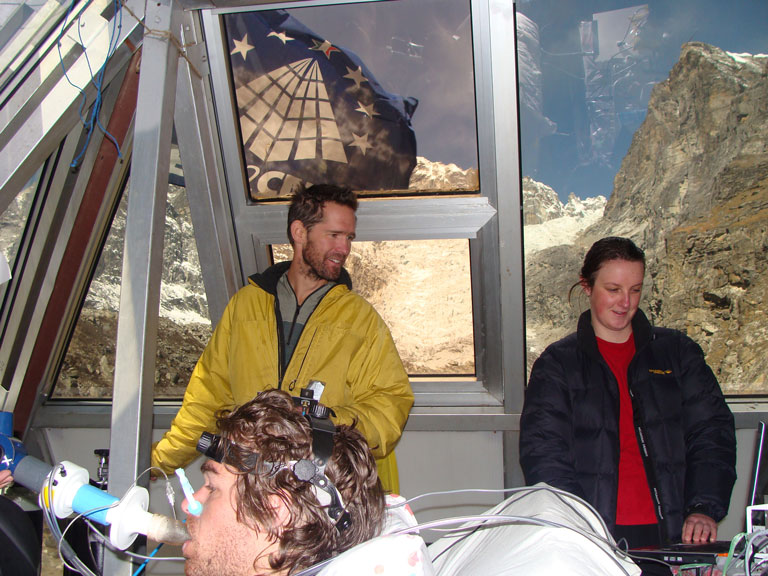Pushing the Limits
The Everest Effect
Pushing the limits is often how new discoveries are made. In April 2012, Philip Ainslie and his team took that line of thought to new heights. They took their research on heart, lung and brain health 5000m above sea level to Mount Everest.
“This is an opportunity to take healthy people and expose them to low levels of oxygen to see how their heart, lungs and brain adapt or maladapt to that exposure,” says Ainslie, Canada Research Chair in Cerebrovascular Function in Health and Disease and associate professor in the School of Health and Exercise Sciences at the University of British Columbia’s Okanagan campus.
“Low levels of oxygen occur in many pathologies,” explains Ainslie. “Lung disease and heart failure occurs when we grow older. So it forms a way to understand how low levels of oxygen affect the body at an early stage.”
The Ev-K2-CNR Pyramid Laboratory at Everest base camp in the Khumbu Valley in Nepal is one of the only facilities in the world where the eight necessary experiments could be conducted. And due to the remoteness, the expedition members themselves became the test subjects for experiments ranging from cerebrovascular, cardiopulmonary, and neurocognitive health to measuring the effects of acute mountain sickness and sleep apnea.
The commitment from the team was truly exceptional. Not only had the 25-member team ventured to the other side of the planet, they came from around the world, including UBC, Okanagan College, Duke University, University of Oregon, University of Sydney, Mount Royal University, University of Cardiff, University of Otago and University of the Netherlands.
For a 3-week trip the preparing and planning required extreme dedication. “It takes three or four years minimum to organize and get use of lab space up there,” says Ainslie. “But the results we achieve have the potential to provide new insights into illness prevention and better human health.”
Related Content

“The results we achieve have the potential to provide new insights into illness prevention and better human health.”


Wow. I was at EBC May 2012. I live in North Vancouver and trained the Grind almost three times a week prior to going to Nepal (striking elevation difference).
I took no diamox and as long as I was standing I was not affected by altitude, at all, climbing cardiac hill faster than the sherpas by about 5 minutes.
But I awoke gasping for breath on a couple of nights. Most disconcerting.
I would have loved to have been a part of your research.
Cheers.